There is no better time we acknowledge the essence of fire than during the cold winter.
But for the best experience, it’s imperative to stack enough firewood with the ideal burn qualities.
It brings us to the question of how much firewood is enough.
We measure firewood quantity in cords. In this guide, we’ll help you answer the query; how long will a cord of wood last?
Difference between the full cord and face cord
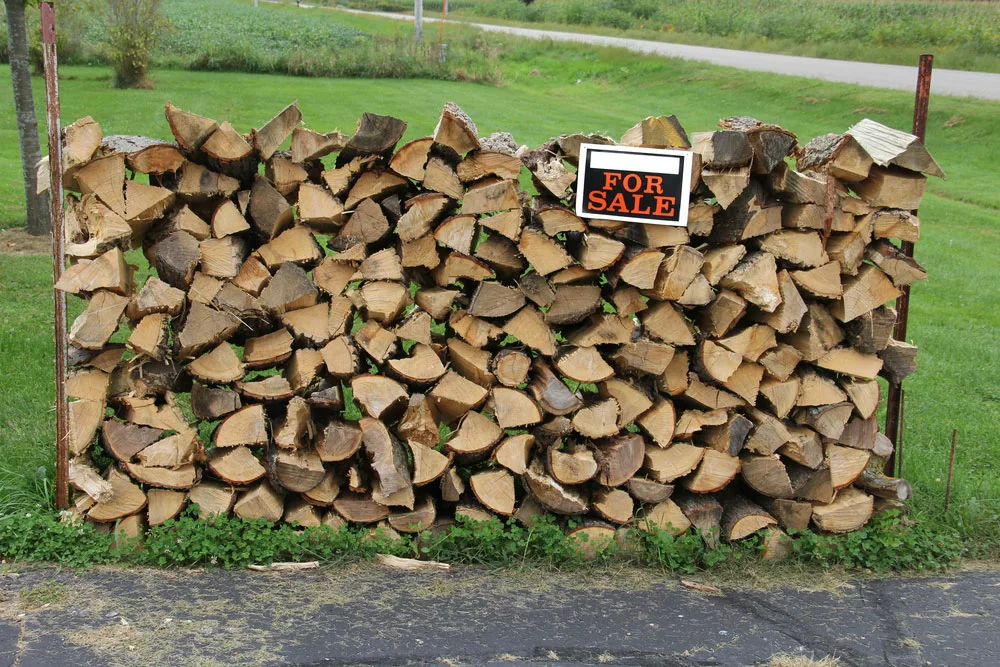
A face cord.
When buying firewood, you must demonstrate the difference between a full cord and a face cord.
A full cord of firewood is the regular (standard cord) of wood that measures 4 feet in height, 8 feet in width, and 4 feet in depth.
Also, we can define a full cord as any volume of wood amounting to 128 cubic ft.
On the other hand, a face cord features similar measurements in width and length but has a depth of 16 inches. (Note that all the dimensions for the full cord are in feet while the depth of the face cord is in inches.)
The face cord has the ideal wood stove dimensions; thus, a piece of wood from such a pile is ready to use.
Otherwise, you cannot directly use a 4 feet wood from the full cord in your wood stove.
Also, we have a half-face cord with a width of 4 feet rather than 8 feet in the full-face cord, while all the other dimensions remain similar.
Lastly, three face cords make up a full cord in total volume.
How Many Pieces of Wood in a Cord?
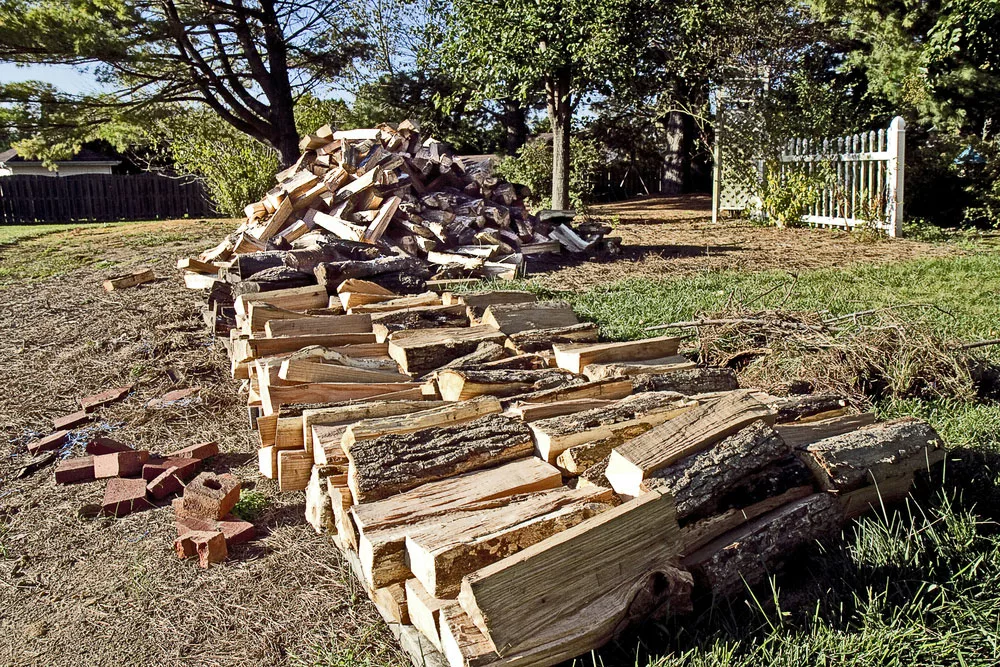
A cord of split firewood.
On average, a full cord amounts to between 600 to 800 planks of firewood.
However, the actual number fundamentally relies on the size of the firewood.
Thus, thus the shorter the firewood pieces, the more pieces you’ll require to make a cord.
Primarily if you have firewood with a depth of 16 inches, you’ll need about 700 pieces to make up a full cord.
Factors Influencing the Number of Pieces
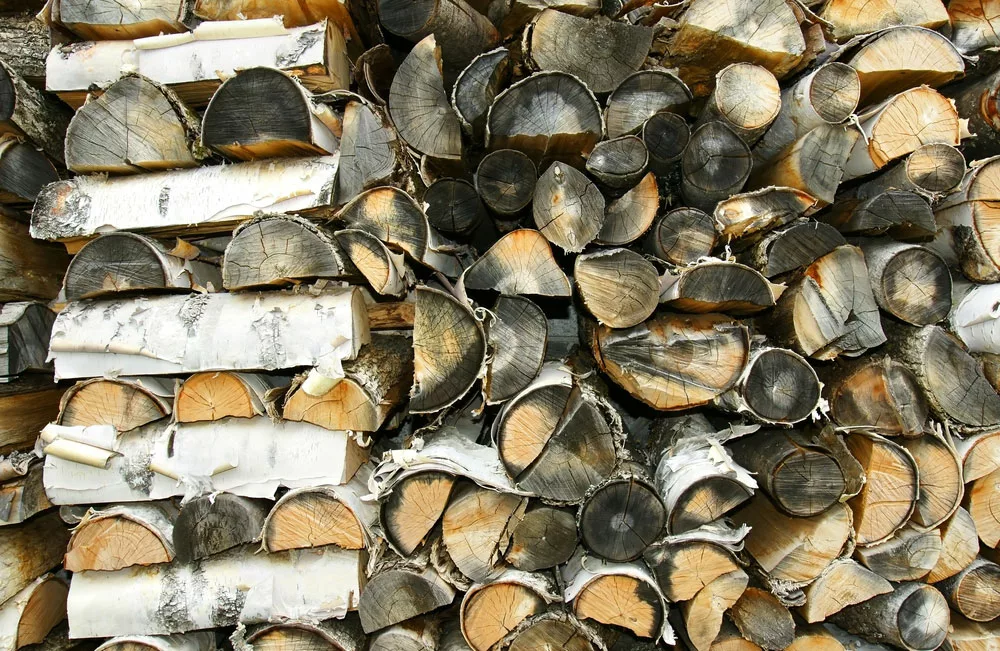
A Paper Birch Firewood Cord.
Stacking
To estimate the cord size by cubic feet measurements, ensure the wood is in a closed pack.
Otherwise, you’ll obtain fewer pieces than what makes up a cord.
Splitting
When buying firewood cords, go for the stack comprising split wood over the one with full logs.
Unsplit wood will leave more air spaces between the pile so that they will pack less than unsplit firewood.
Moreover, buying split firewood is advantageous as you won’t have to break it to use in your stove or kiln.
Moisture Content
Undried wood is bulky and thus will appear large when in a cord.
But its volume significantly shrinks after drying, especially if it is softwood, so you remain with less firewood.
Hence, when buying firewood in cords, select the pile with dry wood over a green one.
Nonetheless, some sellers retail green wood at a lower price than dry wood. So if you’re ready to allow it to dry patiently, you can choose this option.
But it may shrink immensely, so the best idea is to go for dry wood on any day.
Critical Considerations for your winter firewood supply
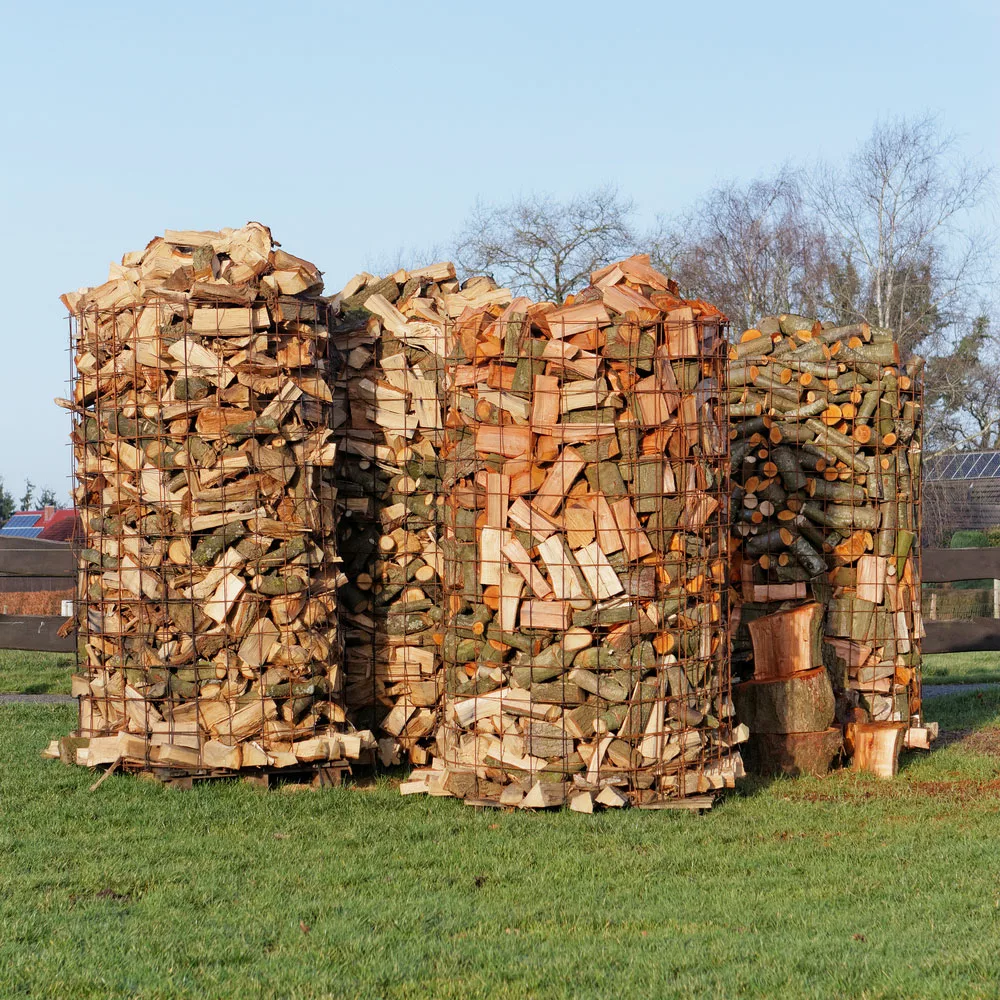
Wood Piles.
Firewood as a primary heat source
Are you using firewood occasionally and relying on other heat sources such as gas or electricity as the primary sources?
If that’s your case, then your cord will last for a long time.
But if you depend entirely on firewood to warm your house, you’ll deplete a cord quickly.
Size of the home
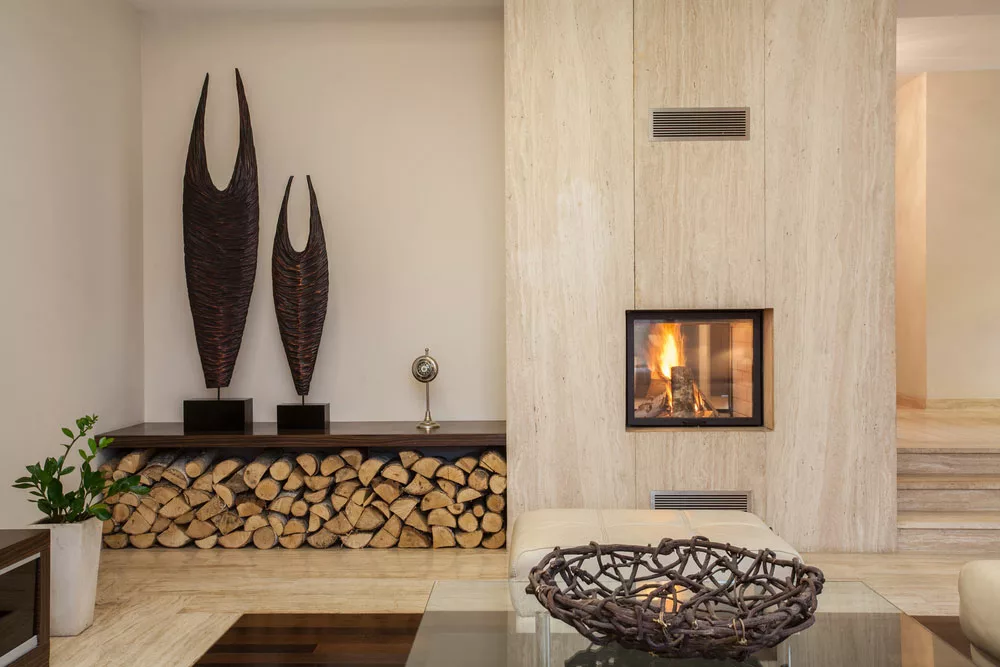
A modern fireplace.
Your home size is also a fundamental determinant of how long your cord of wood lasts and how much you need for winter.
If you own a home measuring 1000 square feet, you’ll need more firewood than when it’s smaller.
Firewood Burning Frequency
How often do you need to burn firewood?
Do you always stay home and keep a firewood fire ablaze to maintain warmth, or do you need it in the evening?
These are among the key things you should ask yourself as you speculate on the needed firewood volume.
Insulation Efficiency
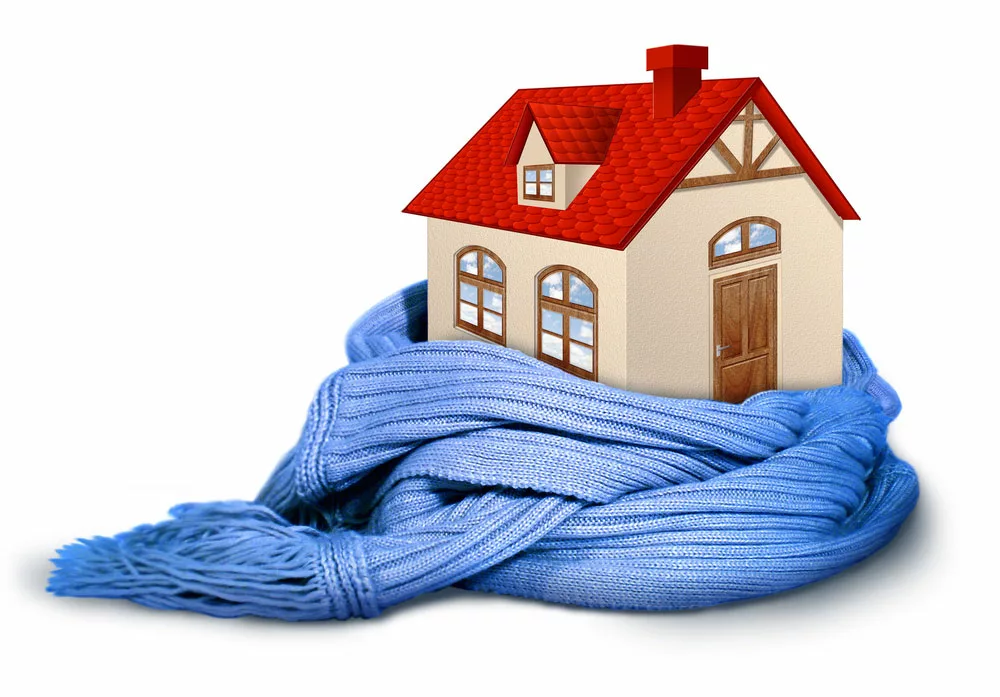
Illustrating house insulation.
You cannot afford to get the insulation wrong, as much of your heat from the firewood stove or kiln will go to waste.
Hence, adopt good insulation to significantly limit the amount of firewood for the cold season.
Living Location
Where you live and the local climatic conditions matter when determining the firewood you need to stack.
For instance, if you’re in Texas (the winters are less severe), you don’t require a lot of firewood in winter compared to if you were in Michigan.
Again, it would be best to store firewood properly, especially in cold and wet climates like Michigan.
In such areas, poorly stacked wood will draw moisture from the surroundings and thus take longer to dry.
It’ll also affect the burning quality. Hence you may require more firewood.
Firewood Type
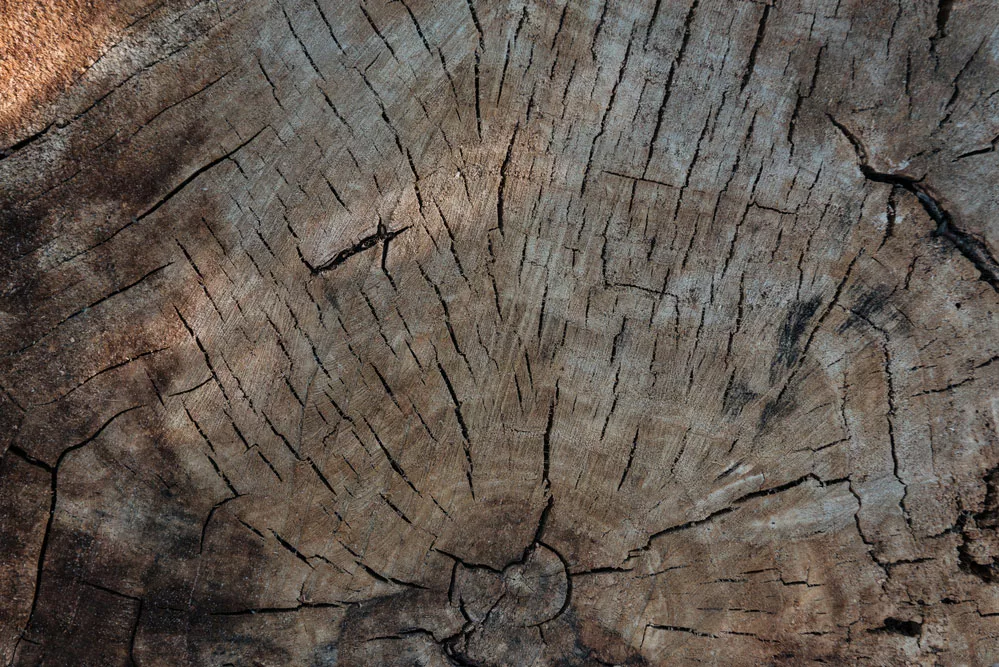
Hardwood Firewood.
Is your firewood hardwood or softwood? The type of wood is very significant as it affects critical burn features such as the following:
- Overall firewood weight and fire scent
- Firewood ash yield and BTU per cord
- Burning duration and overall cost of the firewood.
Hardwood species make the best firewood as they are dense and thus burn slowly and retain heat for a long time.
So when picking firewood, opt for hardwoods like Oak, Maple, and Black Locust over softwood like Cedar, Pine, and Douglas fir.
Wood Seasoning Level
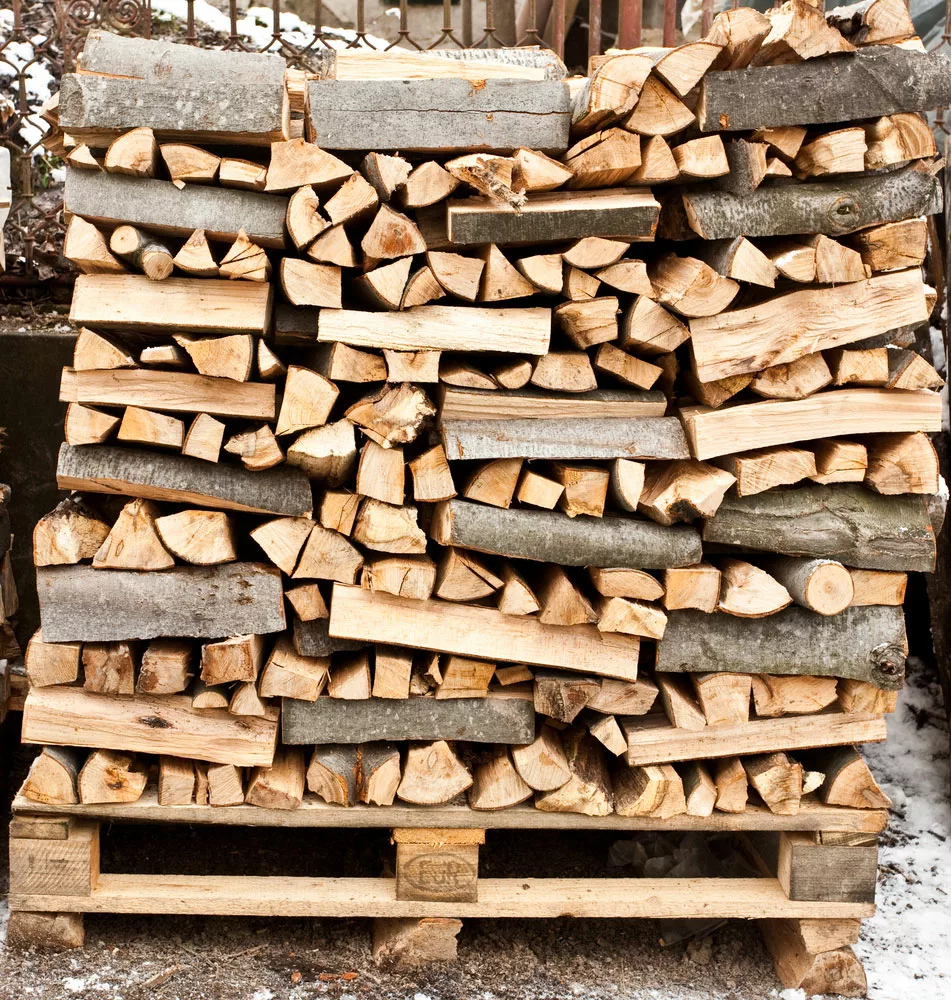
A stack of firewood.
If your wood is partially seasoned, it will burn slowly and ineffectively as a bulk of its heat dries it.
Thus, it would be best to burn only well-seasoned firewood for maximum cord efficiency.
If you want to grow your wood after buying it, here are a few simple steps.
- First, construct a wood stack outside. The outside environment is ideal as it allows air to circulate between the wood pieces, thus hastening the drying process.
- Again, it’s imperative to elevate your stack from the ground. It improves aeration and also prevents contact with water on the ground.
- While stacking the firewood, beware of the stability of your shed. If you stack a lot more than it can shoulder, it will crumble, so always beware of its strength.
- Also, ensure sufficient gaps between the firewood rows to enhance air circulation.
- Lastly, it would help to efficiently cover your wood stack to shield it from rain and ice.
Burn Duration of a Firewood Cord
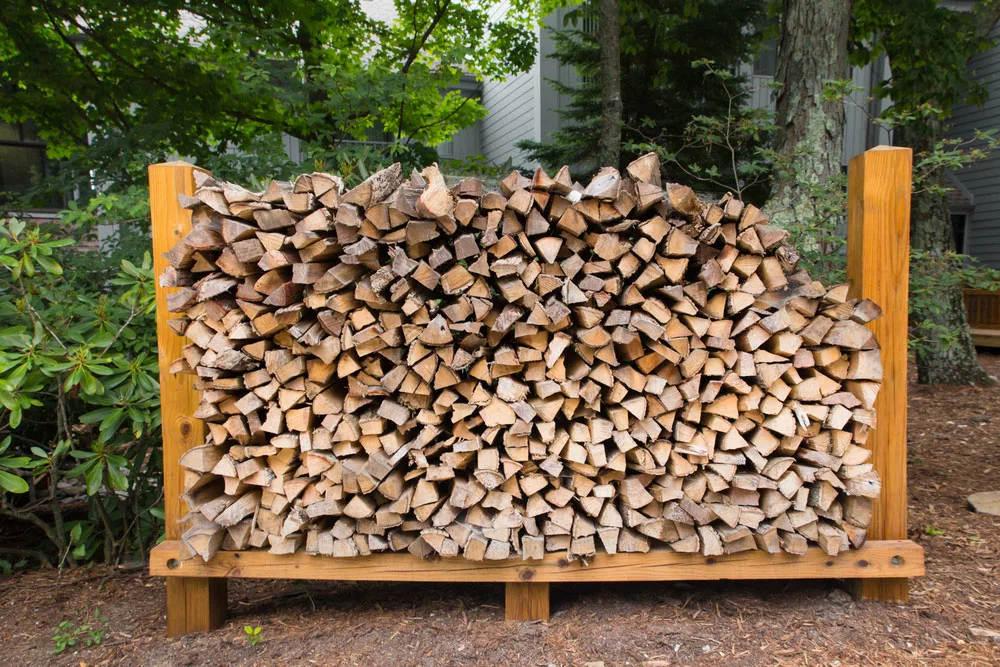
A firewood cord.
Primarily, if you stack a cord of firewood (hardwood), it should serve you for approximately two to four months.
However, the burn duration is not definite as it primarily relies upon the factors we have covered above.
On average, 1000 square feet will annually require three cords.
However, the demand may be higher, especially if you always use firewood to warm your house without an alternative.
What is the Average Cost of a Cord of Wood?

Truck with firewood.
A full cord of firewood (A mix of hardwoods and softwoods) will go for between $150 to $250.
Hence, a face cord will retail at around $50 to $80. However, some factors can affect the actual cost of the wood, such as the following:
- If you buy firewood during winter, it’s pricier than during the summer because of the demand in the former.
- Also, always, dry wood will cost more than green firewood.
Overall, the wood cost will depend on other factors, such as the pricing model of the supplier.
Summary
As we have elucidated above, a wood cord is the standard measurement when quantifying firewood.
Also, we have highlighted the key differences between a face and a full cord.
So we hope you’re good to go when picking firewood for use during the cold weather. Also, always talk to us for clarification, and we’ll respond promptly.
